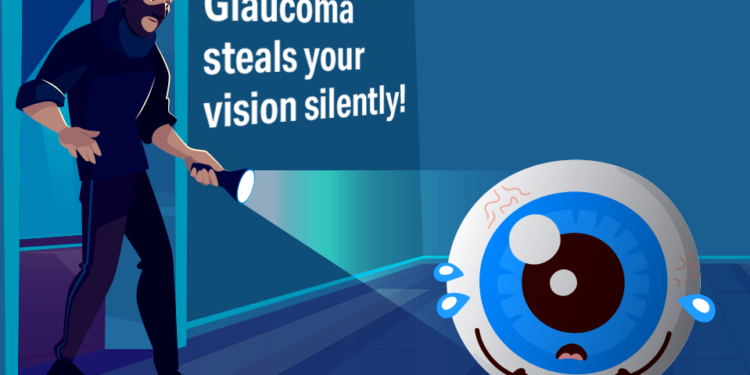As an optometry student, one of the first things I learnt is that not all eye diseases give you a warning sign — and glaucoma is the perfect example. Glaucoma is one of the leading causes of blindness in the world, but what makes it even scarier is how quietly it creeps up on people. That’s why many people call it “the silent thief of sight.”
So, what exactly is glaucoma?
In simple terms, it’s a group of eye diseases that damage the optic nerve — the nerve responsible for carrying information from your eye to your brain so you can see. Most of the time, this damage happens because of increased pressure inside the eye, known as intraocular pressure (IOP). But here’s the catch: glaucoma can also occur with normal eye pressure, making it harder to spot.
The most common type is primary open-angle glaucoma. This type develops slowly and painlessly over time, and most people don’t notice anything until parts of their side vision (peripheral vision) start to disappear. By then, some damage is already permanent. There’s also angle-closure glaucoma, which happens more suddenly and is an emergency because the eye pressure rises very quickly, causing severe eye pain, headaches, and blurry vision.
As a student training to become an eye doctor, it’s alarming to think how many people are walking around with glaucoma and don’t even know it. That’s why regular eye tests are super important, especially for people at risk — like those above 40, people with a family history of glaucoma, people of African or Asian descent, and those with other conditions like diabetes or high blood pressure.
The sad truth is that glaucoma doesn’t reverse; once the optic nerve is damaged, it stays that way. But the good news? If we catch it early through routine eye exams, we can slow it down or even stop it from stealing more vision.
Treatments include eye drops that lower eye pressure, laser treatments, or surgery, depending on how severe it is.
For us as future optometrists, glaucoma is a reminder that sight is precious. It’s not just about helping people see clearly today but about protecting their vision for the future. That’s why when we check a patient’s eye pressure or examine their optic nerve during a routine exam, we’re not just ticking off boxes — we might be saving their sight.
So next time you hear someone say, “I can see fine, so I don’t need an eye test,” remind them about glaucoma. Because by the time they notice something is wrong, it might already be too late.










































